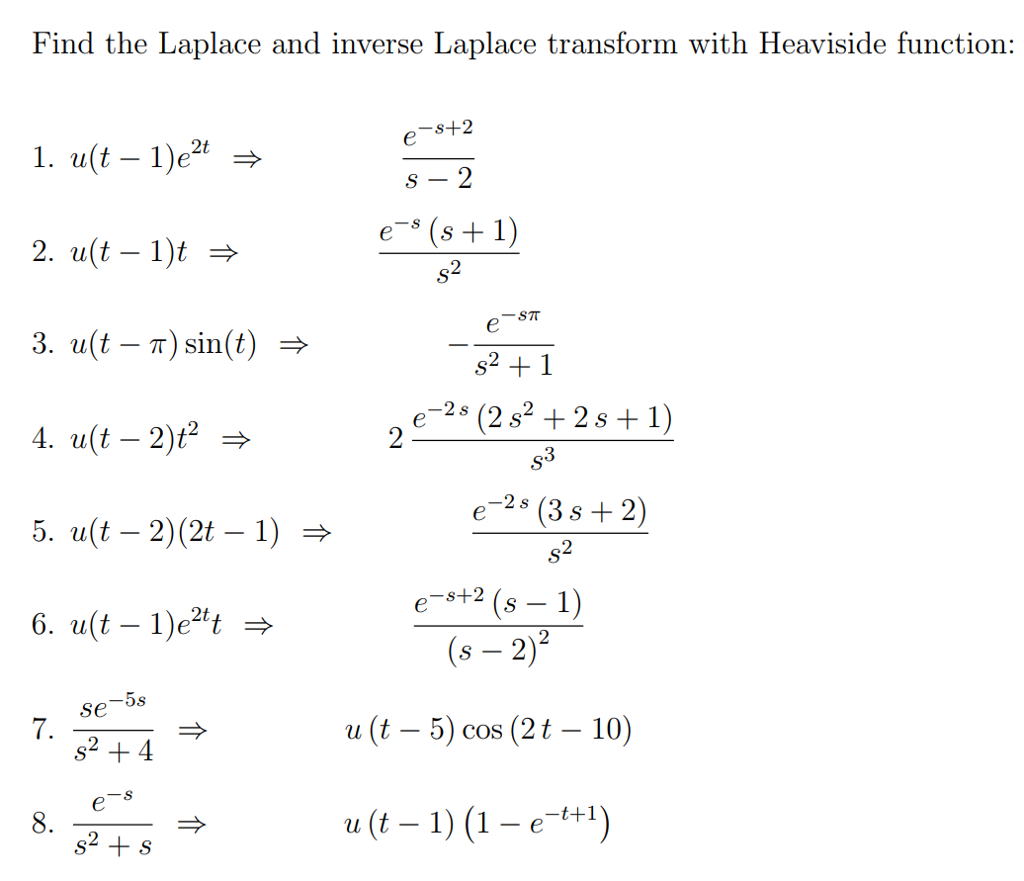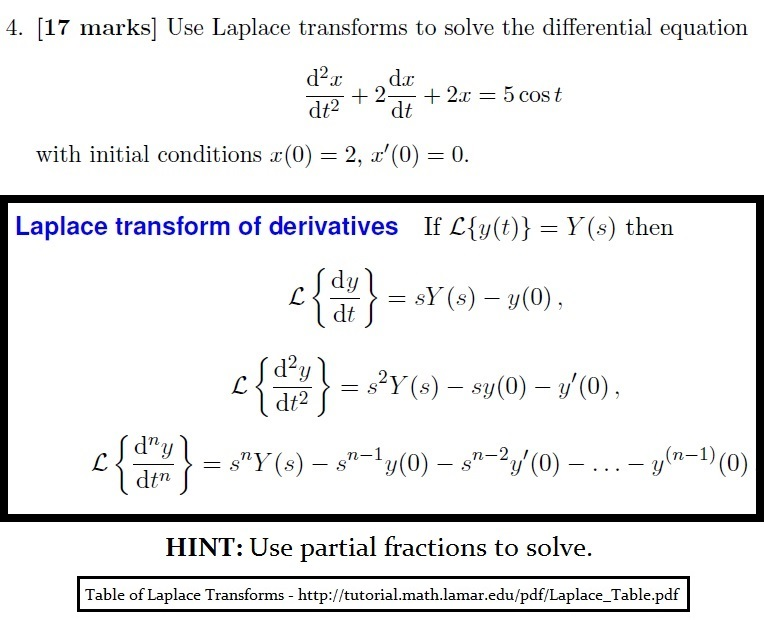
Therefore, when we invert the transform, using the Laplace table:įor x ∞, we assume that u(x,t) 0. So we have an ODE in the variable x together with some boundary conditions. The boundary conditions become U(0,s) = U(l,s) = 1/s. Respect to t, the Laplace transform U(x,s) satisfies U(0,t) = u(l,t) = 1, u(x,0) = 1 + sin(πx/l)Īnd noting that the partials with respect to x commute with the transforms with Now, we can use the inverse Laplace Transform with respect to s to find Solving this as an ODE of variable x, U(x,s)=c(s)e-x + 1/s2 Partials with respect to “x” do not disappear) with boundary condition

Taking the Laplace of the initial equation leaves Ux+ U=1/s2 (note that the PDEs reduce to either an ODE (if original equation dimension 2) orĪnother PDE (if original equation dimension >2).

Laplace transform in two variables (always taken Manipulation to find a form that is easy to

Go from time argument with real input to a The Laplace transform is a linear operator Lagrange took this a step further while working on probabilityĭensity functions and looked at forms of the following equation:įinally, in 1785, Laplace began using a transformation to solveĮquations of finite differences which eventually lead to the current Euler began looking at integrals as solutions to differential equations


 0 kommentar(er)
0 kommentar(er)
